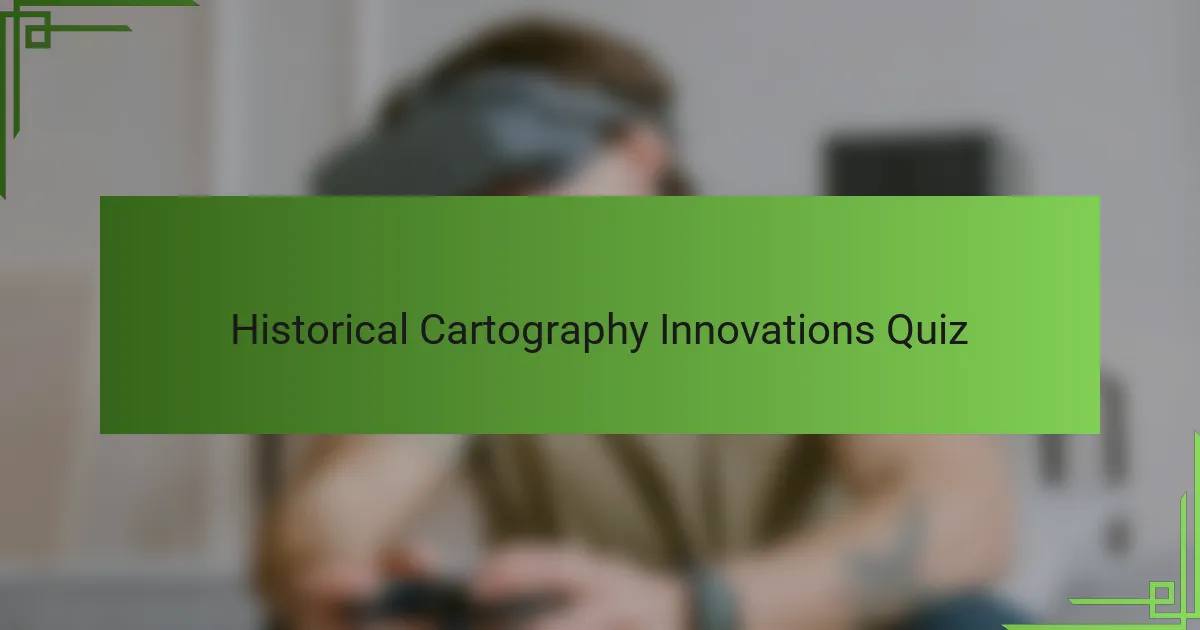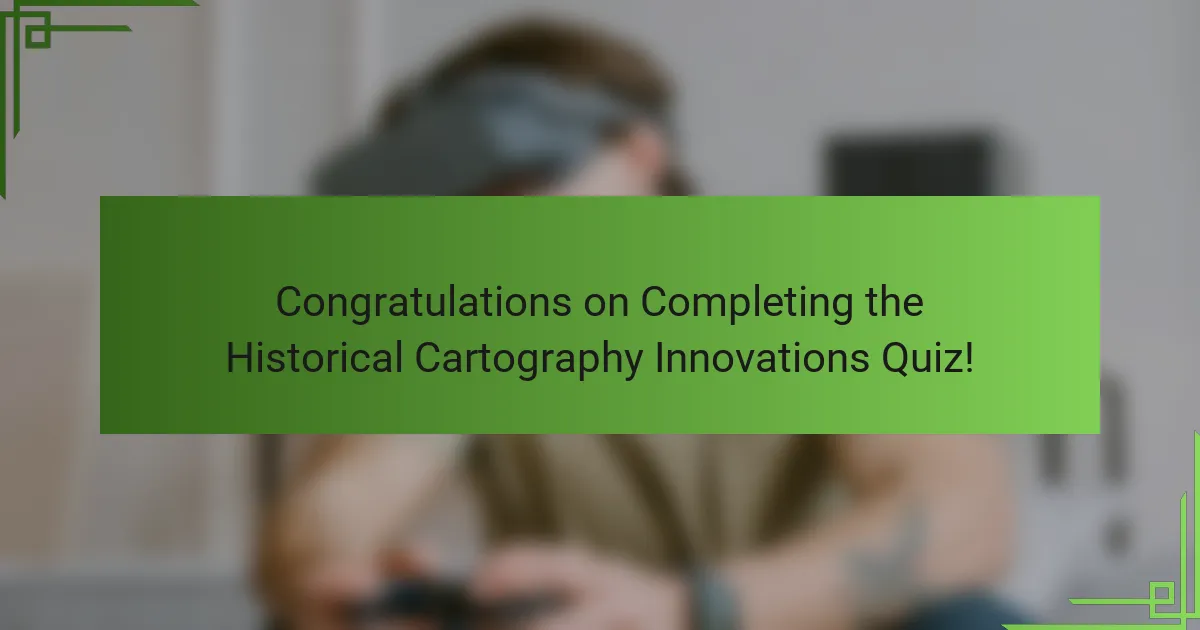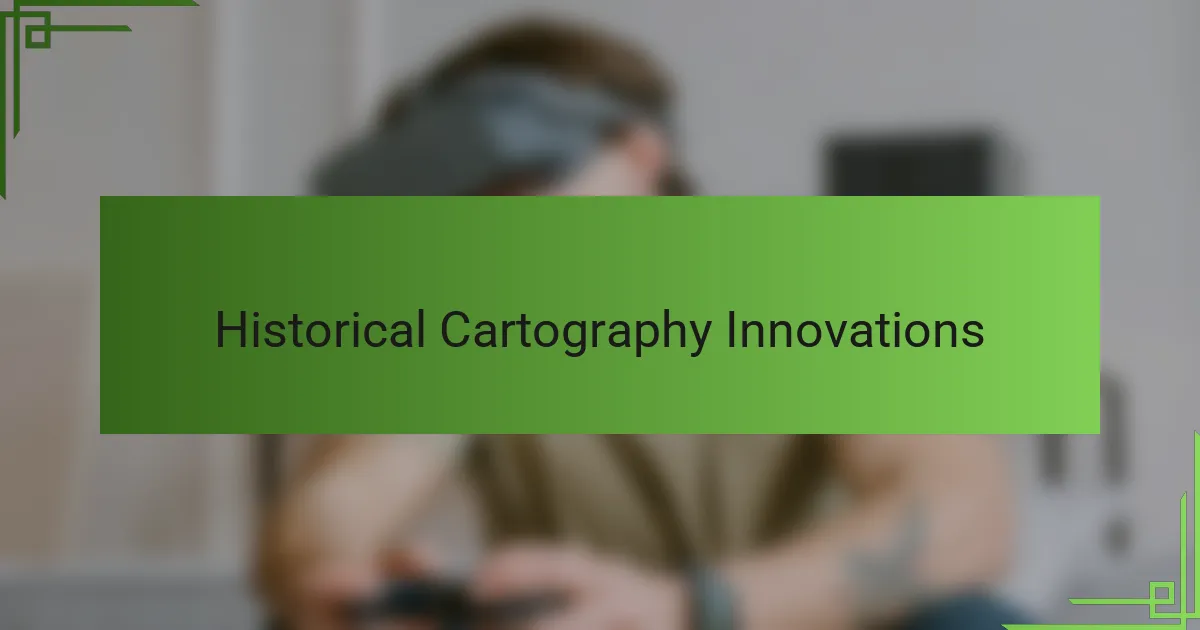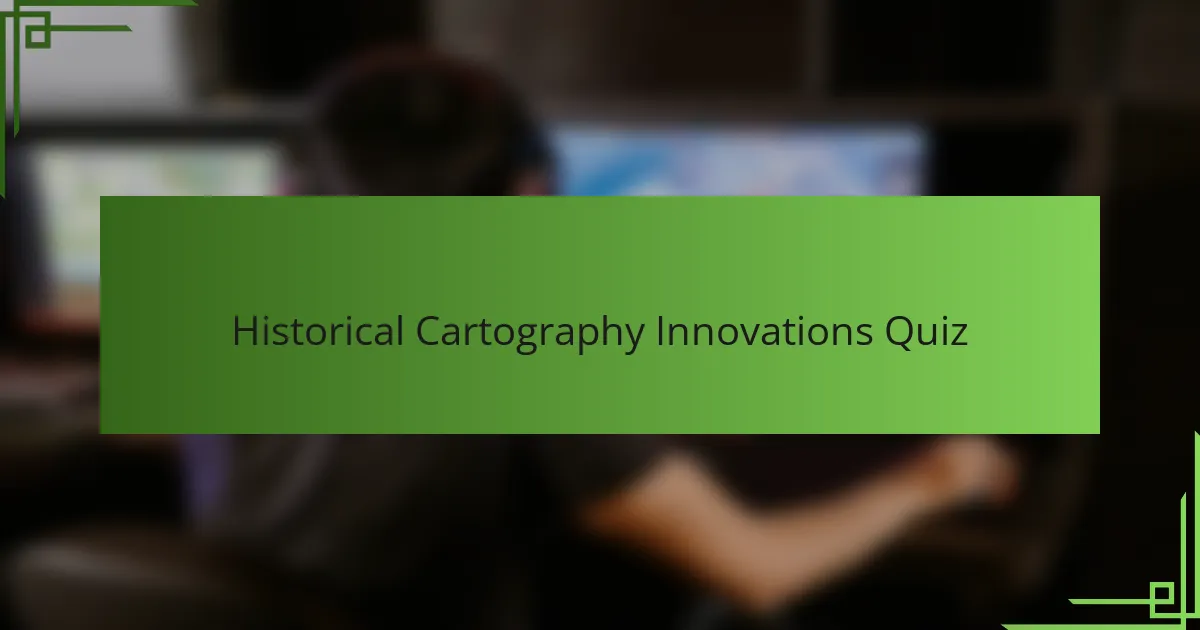
Historical Cartography Innovations Quiz
1. Who is credited with creating the first world map incorporating latitude and longitude lines in the 2nd century AD?
- Claudius Ptolemy
- Eratosthenes
- Strabo
- Hipparchus
2. What innovation did Gerardus Mercator introduce in 1569 that revolutionized nautical navigation?
- The invention of the sextant
- The Mercator projection map
- The development of the compass rose
- The first precise marine chronometer
3. Which ancient Greek geographer compiled the work `Geographia,` influencing European mapmaking for centuries?
- Claudius Ptolemy
- Herodotus
- Eratosthenes
- Strabo
4. The Ptolemaic map system was largely based on the work of which historical figure?
- Hipparchus
- Claudius Ptolemy
- Strabo
- Eratosthenes
5. Who developed the first printed atlas in the 16th century, known as the `Theatrum Orbis Terrarum`?
- Gerardus Mercator
- Martin Waldseemüller
- Claudius Ptolemy
- Abraham Ortelius
6. What was the key cartographic contribution of Abraham Ortelius in the late 1500s?
- Developing the Mercator projection for nautical navigation
- Inventing a new method of celestial navigation for cartographers
- Creating the first accurate map of the New World coastlines
- Compiling the first modern atlas, the Theatrum Orbis Terrarum
7. Which invention in the 15th century drastically improved the accuracy and replication of maps?
- The printing press
- The quadrant
- The astrolabe
- The magnetic compass
8. The Henricus Martellus map is noted for influencing which famous explorer’s voyage?
- John Cabot
- Christopher Columbus
- Ferdinand Magellan
- Vasco da Gama
9. Which cartographer introduced the concept of contour lines to represent elevation on maps?
- Alexander von Humboldt
- Gerardus Mercator
- John Snow
- Charles Hutton
10. The Waldseemüller map, created in 1507, was the first to use what naming innovation?
- America
- Terra Australis
- Novus Orbis
- Asia
11. What mapping technique did Italian cartographer Fra Mauro develop in the 15th century?
- The Fra Mauro map technique
- Portolan chart style
- Ptolemaic projection method
- Mercator cylindrical projection
12. Who was the French cartographer known for pioneering thematic maps in the 18th century?
- Charles Joseph Minard
- Nicolas Sanson
- Guillaume Delisle
- Philippe Buache
13. What was the significance of the Pastorelli map in the context of Renaissance cartography?
- It was the first map to depict the entire known world using a Mercator projection.
- It was primarily significant for accurately mapping inland European trade routes rather than coastal or global geography.
- It was one of the earliest maps to incorporate recent explorations of the New World, influencing subsequent Renaissance cartographers in representing the Americas.
- It introduced a new grid system based on latitude and longitude for the first time in Renaissance cartography.
14. Which explorer`s voyages were extensively documented and mapped by cartographer Matteo Ricci in China?
- Christopher Columbus` voyages were extensively documented by Matteo Ricci in China.
- Vasco da Gama`s voyages were extensively documented by Matteo Ricci in China.
- Matteo Ricci extensively documented and mapped the voyages of Zheng He in China.
- Marco Polo`s voyages were extensively documented by Matteo Ricci in China.
15. Who is considered the father of modern cartography due to his systematic approach and use of triangulation?
- Gerardus Mercator
- Willebrord Snellius
- Claudius Ptolemy
- Abraham Ortelius

Congratulations on Completing the Historical Cartography Innovations Quiz!
You’ve just explored fascinating milestones in the development of maps and mapping techniques. This quiz helped highlight key breakthroughs that shaped how we understand our world today. From ancient mapmaking tools to modern innovations, each question was designed to deepen your appreciation of geography.
By engaging with this quiz, you learned about important figures, technologies, and ideas that transformed cartography. This knowledge enhances your grasp of geography as a dynamic field influenced by science, culture, and exploration. Understanding these innovations allows you to see maps not just as static images, but as evolving tools that tell rich stories about our planet.
To continue your journey, we invite you to check out the next section on this page. There, you will find detailed articles and resources about Historical Cartography Innovations. This content will further expand your knowledge and satisfy your curiosity about the geography behind mapmaking. Keep exploring and enjoy discovering the world through maps!

Historical Cartography Innovations
Overview of Historical Cartography Innovations
Historical cartography innovations refer to the key developments and inventions that have shaped the science and art of mapmaking over centuries. These innovations include improvements in measuring techniques, projection methods, and map accuracy, driven by the need to better understand and navigate the world. Throughout history, cartographers like Claudius Ptolemy and Gerardus Mercator introduced groundbreaking methods that allowed for more precise representation of geographic information, fundamentally transforming geography as a discipline.
The Role of Ptolemy and the Geographia
Claudius Ptolemy, a 2nd-century Greco-Roman scholar, made critical contributions through his work “Geographia.” This treatise compiled geographic knowledge and introduced a coordinate system based on latitude and longitude, setting the foundation for modern cartography. Ptolemy’s maps used mathematical principles to depict the world more systematically, influencing European mapmaking during the Renaissance and beyond. His work enabled later cartographers to create maps with improved spatial accuracy.
Mercator Projection and Navigational Advancements
Gerardus Mercator, a 16th-century Flemish cartographer, revolutionized mapmaking by inventing the Mercator projection. This cylindrical projection allowed sailors to plot straight-line courses, known as rhumb lines, which were crucial for maritime navigation during the Age of Exploration. Mercator’s innovation addressed the challenge of representing the curved surface of the Earth on flat maps, aiding explorers like Ferdinand Magellan and James Cook in long-distance sea voyages.
Introduction of Triangulation in Cartography
Triangulation, first systematically applied in the 16th and 17th centuries, marked a significant innovation in surveying and map accuracy. This method involves measuring angles in a network of triangles to determine distances and positions precisely. Pioneered by figures such as Willebrord Snellius in the Netherlands, triangulation enhanced geographic measurements for regional and national mapping projects. It laid the groundwork for modern geodesy and topographic map creation.
Development of Thematic Mapping Techniques
Thematic mapping emerged as an important cartographic innovation focused on representing specific data sets such as population, climate, or economic activity. In the 19th century, Charles Joseph Minard’s statistical maps dramatically improved geographical visualization by integrating quantitative data with spatial information. His famous map of Napoleon’s Russian campaign exemplifies how thematic maps can convey complex information effectively, expanding the scope and utility of geographic analysis.
What are Historical Cartography Innovations?
Historical cartography innovations are advancements and new techniques developed to improve the creation, accuracy, and usability of maps throughout history. These include the introduction of projection methods like the Mercator projection in 1569 by Gerardus Mercator, which allowed for more accurate navigation, and the use of triangulation techniques pioneered in the 18th century to measure land more precisely. These innovations have enhanced the representation of geographical features over time.
How did the invention of the printing press impact historical cartography innovations?
The invention of the printing press in the 15th century allowed maps to be widely reproduced and distributed, significantly accelerating the spread of geographical knowledge. It enabled cartographers like Abraham Ortelius to publish atlases, such as the “Theatrum Orbis Terrarum” in 1570, considered the first modern atlas. This innovation promoted standardization and the exchange of cartographic ideas.
Where were some of the most significant historical cartography innovations developed?
Significant historical cartography innovations were primarily developed in Europe, especially in countries like Portugal, Spain, and the Netherlands. These nations led explorations during the Age of Discovery in the 15th and 16th centuries, driving demand for improved navigation maps. The development of more accurate coastal maps and sea charts in Lisbon and Amsterdam exemplifies this.
When did the use of celestial navigation techniques influence historical cartography innovations?
Celestial navigation techniques influenced historical cartography innovations notably in the 16th and 17th centuries. Tools like the astrolabe and later the sextant allowed seafarers to determine latitude by measuring the angle of celestial bodies. This led to improved map accuracy during this period, aiding explorers such as James Cook in creating detailed maps during his 18th-century voyages.
Who are some key figures responsible for historical cartography innovations?
Key figures in historical cartography innovations include Gerardus Mercator, who developed the Mercator projection; Abraham Ortelius, who compiled the first modern atlas; Ptolemy, whose 2nd-century maps and geographical writings laid foundational theories; and Captain James Cook, whose detailed 18th-century charts expanded cartographic knowledge. Their contributions shaped map-making techniques and accuracy.
